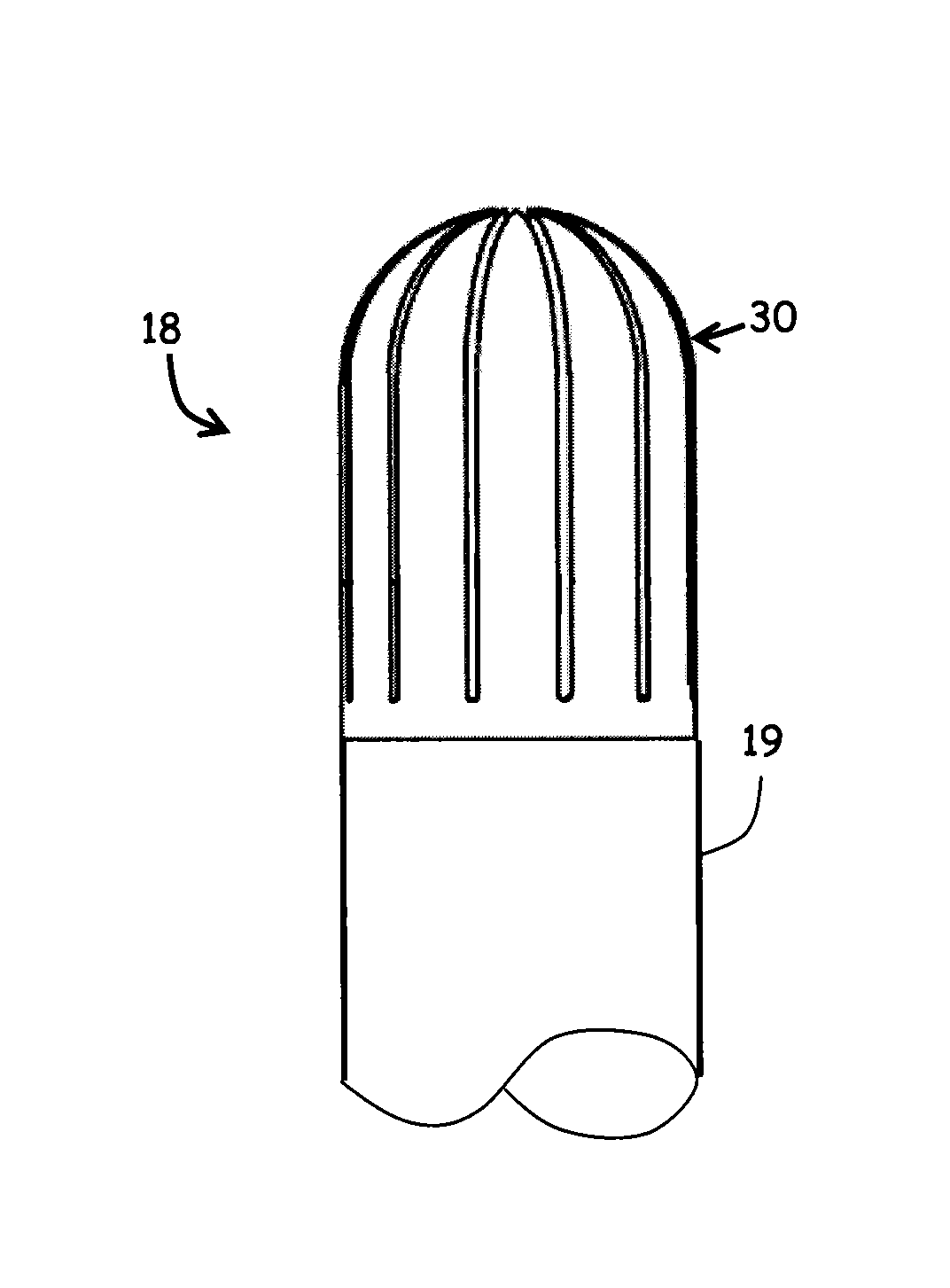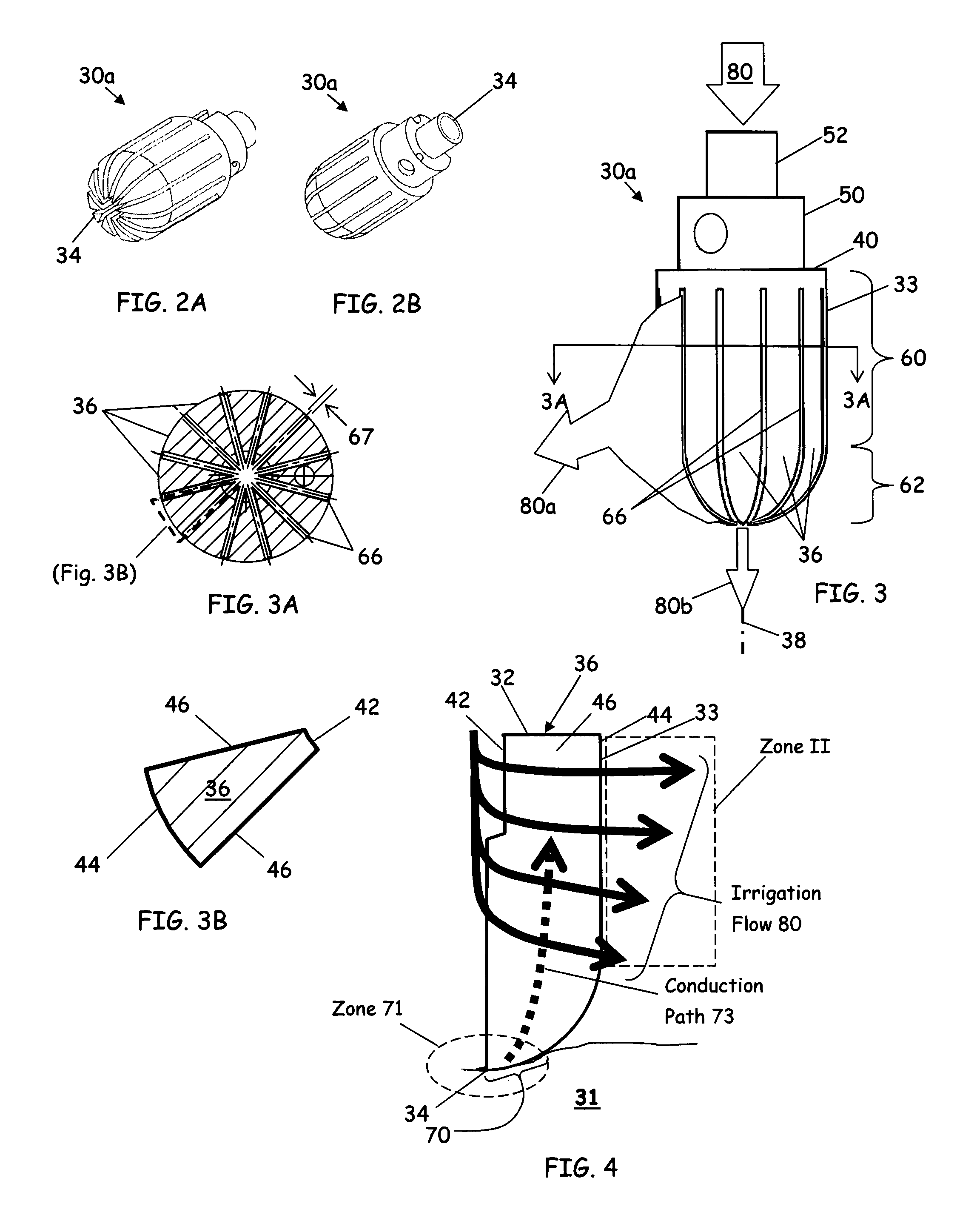Irrigated finned ablation head
a technology which is applied in the field of irrigated fins and ablation heads, can solve the problems of blood clot formation and persisting implementation of irrigated ablation heads
- Summary
- Abstract
- Description
- Claims
- Application Information
AI Technical Summary
Benefits of technology
Problems solved by technology
Method used
Image
Examples
Embodiment Construction
[0044]Referring to FIG. 1, an ablation catheter system 16 having a catheter 18 having an elongated, flexible shaft 19 and an irrigated finned ablation head 30 positioned at one end of the flexible shaft 19. Herein, several embodiments of the irrigated finned ablation head 30 are presented, designated specifically by letter suffix (e.g., “30a”) and referred to collectively by numerical reference 30. The catheter system 16 can further comprise a power supply 20 for powering the irrigated finned ablation head 30 and an irrigation supply 22 for providing fluids to the irrigated finned ablation head 30. In an embodiment of the invention, the catheter system 16 can further comprise a thermocouple lead extending from proximate to the irrigated finned ablation head 30 through the other end of the flexible shaft 19. The elongated catheter 18 defines an internal lumen for receiving a power supply line 24 linking the irrigated finned ablation head 30 to the power supply 20. Similarly, the inte...
PUM
 Login to View More
Login to View More Abstract
Description
Claims
Application Information
 Login to View More
Login to View More - R&D
- Intellectual Property
- Life Sciences
- Materials
- Tech Scout
- Unparalleled Data Quality
- Higher Quality Content
- 60% Fewer Hallucinations
Browse by: Latest US Patents, China's latest patents, Technical Efficacy Thesaurus, Application Domain, Technology Topic, Popular Technical Reports.
© 2025 PatSnap. All rights reserved.Legal|Privacy policy|Modern Slavery Act Transparency Statement|Sitemap|About US| Contact US: help@patsnap.com



